Grid resilience: Omexom in New Zealand finishes work on Clutha Upper Waitaki Lines Project
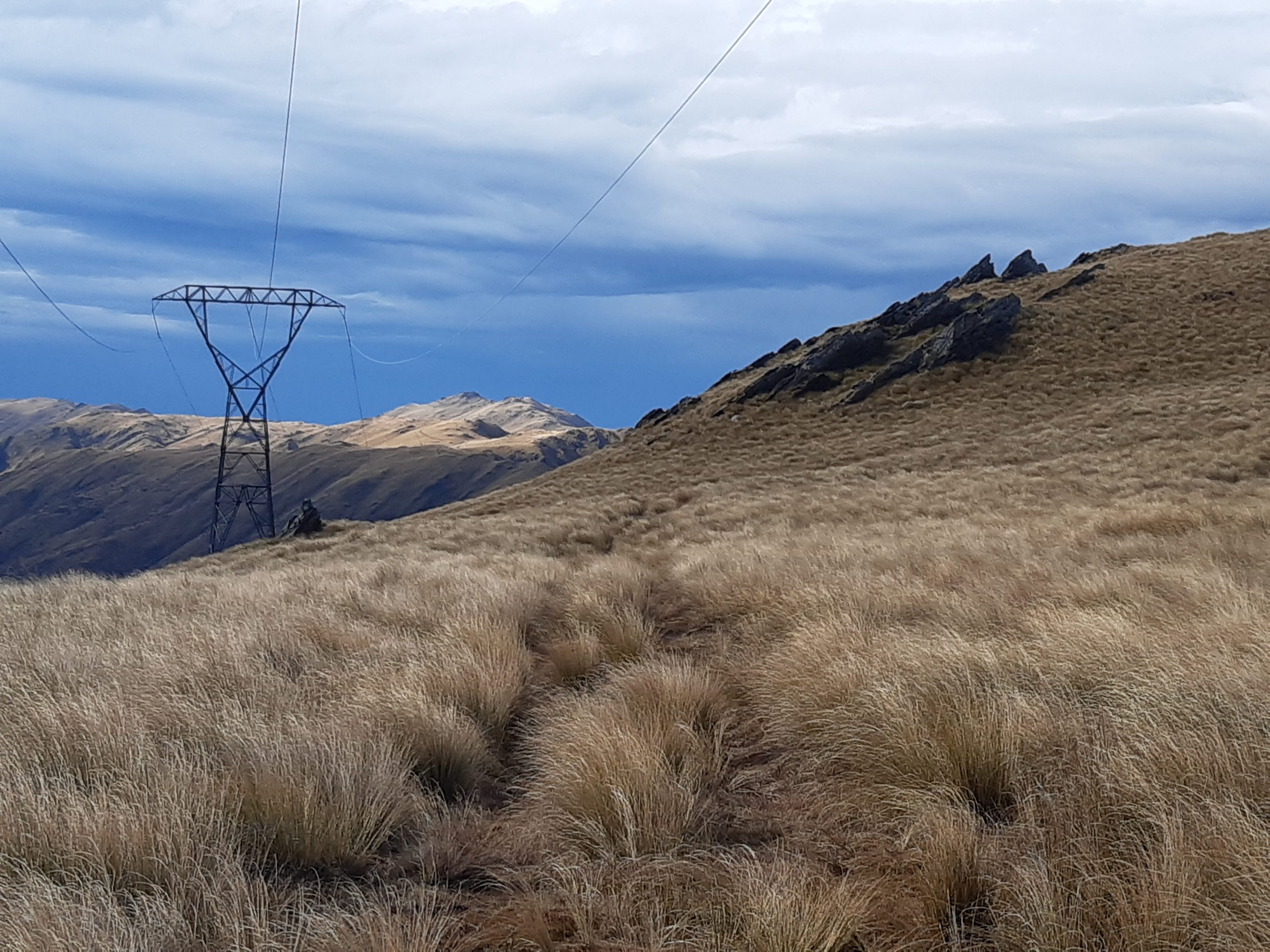
On New Zealand’s South Island, Omexom crews have finished works on the Clutha Upper Waitaki Lines Project (CUWLP), a major step in securing the future of the country’s energy supply. By increasing the resilience of the electricity grid in the project area, CUWLP will facilitate further renewable energy development and reduce emissions by increasing New Zealand’s total share of renewable energy.
Once completed, CUWLP will enable an additional 400 megawatts of power to move northwards. To put that into context, the greater Christchurch area, the South Island’s largest urban agglomeration, requires about 380 megawatts.
Transpower, the owner and operator of the national grid, is responsible for the reliability of the grid and is putting in place CUWLP to prepare for potential future supply and demand scenarios.
Participating in the largest most complex transmission line project in recent years for Transpower and this with excellent results is a big success for Omexom in New Zealand.
“The transmission line upgrade was completed with a very strong safety record, ahead of programme and with a strong financial result for Electrix and our client,” so Phil Patrick, Project Manager at Electrix (Omexom in New Zealand).
A more resilient grid guaranteeing energy reliability and availability
In New Zealand, where renewables account for more than 80 percent of electricity generation, hydro generation typically provides 55 per cent to 60 per cent, around 24,000 GWh each year. However, weather conditions can result in a yearly variation of up to 5,000 GWh since many hydro storage lakes have a relatively small operating band and can only store around 4,000 GWh when full.
A more resilient grid will improve electricity supply to the Southland region during dry periods and create the technical requirements for the largest hydro power station in New Zealand, Manapouri, to be fed into the national grid in the future.
Making room for output from the largest hydro power station in New Zealand
Located in Fiordland, Manapouri has seven 122 megawatt generating units and an operating maximum output of 800 megawatts, which is equivalent of the electricity needs of about 620,000 New Zealand households, 13% of New Zealand’s electricity. It is currently used by Rio Tinto’s Tiwai Point aluminum smelter, whose closure is currently expected for December 2024, making way for Manapouri’s support of the public grid.
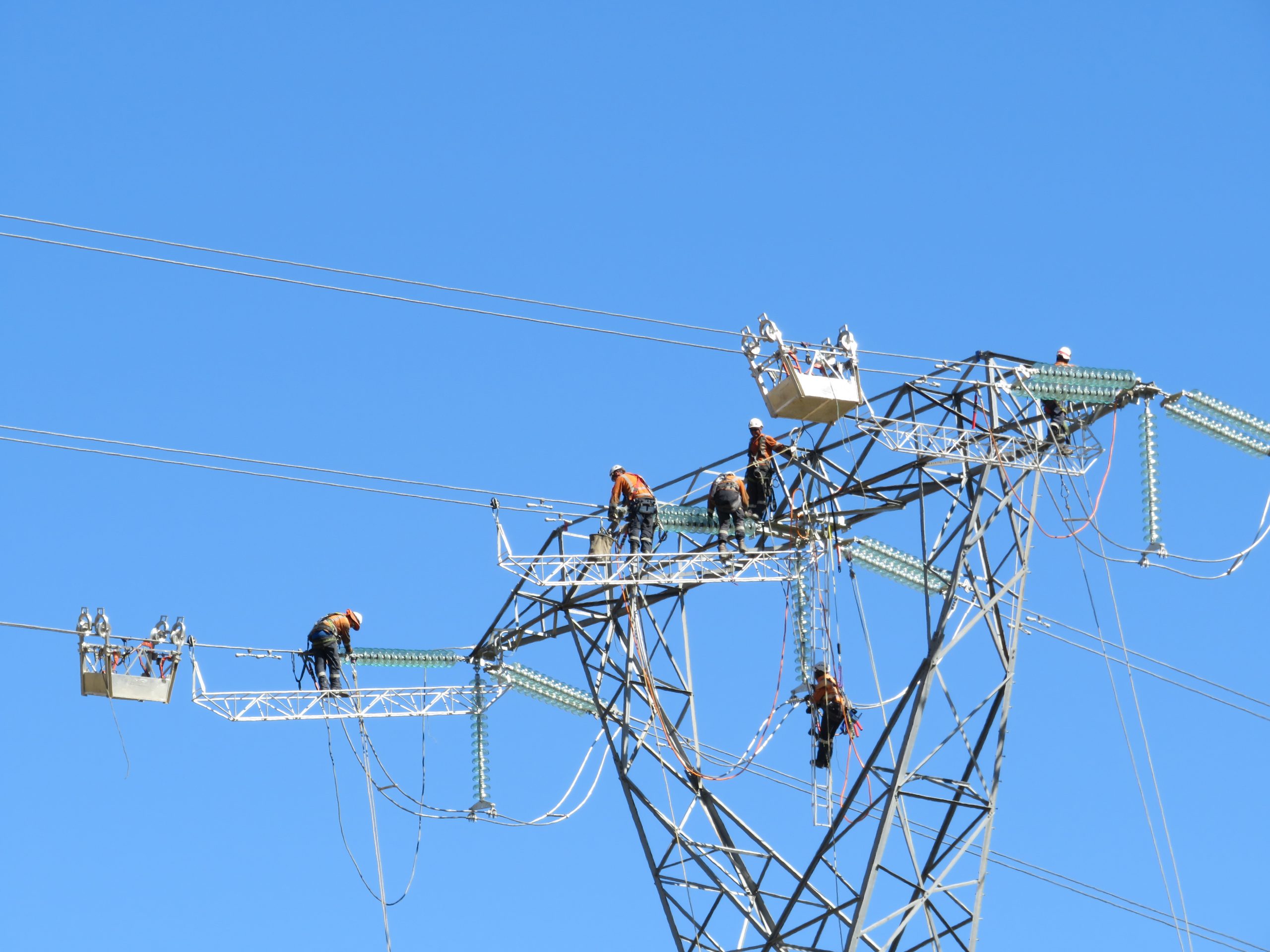
The CUWLP project has replaced the existing single conductors per phase with two conductors per phase across a circuit of 143 km, comprising more than 430 towers. This equates to nearly 900 km of new conductors being installed. To prepare the towers for the additional loads from the new conductors, three hundred twenty-two tower foundations needed to be strengthened.
“For me, being involved with the terrific project team on such a critical project was very special. Everybody involved pulled their weight and performed extremely well. I feel privileged to have been part of such a great workforce.”
Phil Patrick
Capital Works Manager, Electrix (Omexom in New Zealand)
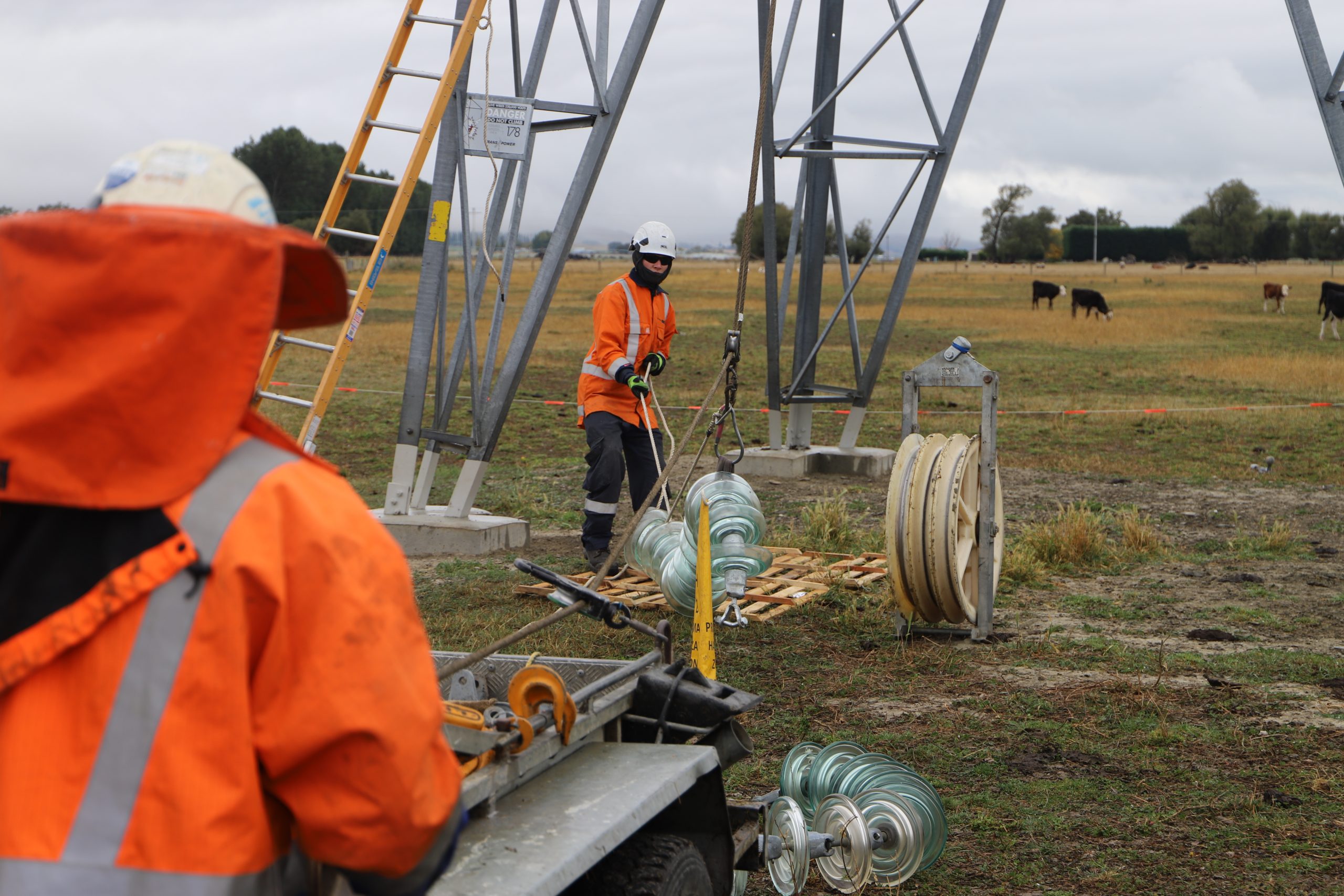
Nine hundred kilometers, eleven months, three business units, one team
Electrix’s (Omexom in New Zealand) wiring crews have replaced the single electrical conductor per phase with two conductors per phase, an operation known as duplexing, to increase the capacity of this transmission line from about 600MW at present, to about 1000 MW.
The project started in January 2021 and was wrapped up at the end of March 2022, with a break of four months since works could not be efficiently undertaken in the winter months. The short timeframe required a collaboration between three different Omexom New Zealand business units.
“For me, being involved with the terrific project team on such a critical project was very special. Everybody involved pulled their weight and performed extremely well. I feel privileged to have been part of such a great workforce,” said Phil Patrick.
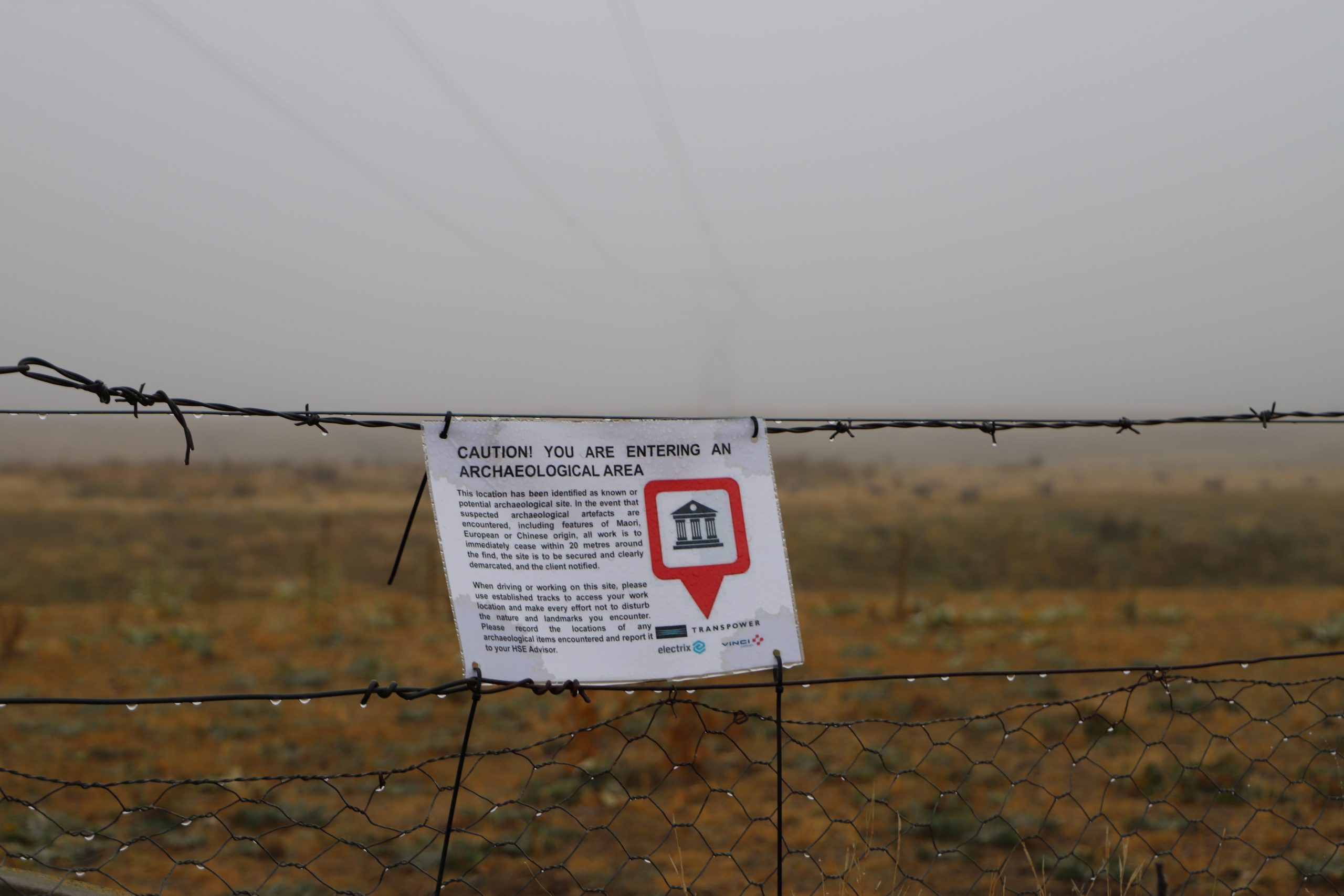
A gateway to past and future
While CUWLP is preparing the country for the future, the past was omnipresent on site. Signposts signal all relevant sites, reminding staff to be aware of the significance of the land they are working on. The area is a treasure trove for pre-European Maori artefacts and more recent events in New Zealand history.
Central Otago was famously where the New Zealand gold rush started in the 1860s, and there are remnants of 19th century gold mining all around the region.
At one site, an Omexom team member discovered an historical culvert made of schist rock slabs when clearing back long grass. The gold miners also built fences with posts made from pieces of schist rock, and small cabins in the 1800s, many of which still exist today. There are numerous “tailings” – deposits of stones which have been excavated and sluiced during the recovery of gold –throughout the countryside.
Bones of Moa, a now extinct flightless bird that once roamed New Zealand, and pre-European Maori tools have been discovered on some of the sites Omexom was working on.
Working far from home in remote areas
Much like those that took part in the gold rush, the Omexom crews had to say goodbye to their homes for a while.
An up to 70-people strong team was drawn from their North Island depots in Hamilton and Palmerston North and South Island depot in Gore to be stationed in Alexandra and then Naseby throughout the whole work season.
“Living away from home for 11 out of 15 months was one of the big challenges for our project work force. Especially for staff with young families and other commitments. The partner remaining home has to shoulder the burden of running the household alone for the extended period,” said Phil Patrick.
Finding sufficient accommodation and for a crew this size was another challenge. In Naseby, population 200, the closest supermarket was ninety kilometers away and on the first day of works the small local gas station ran out of fuel.
To assist with the travel arrangements for our staff, Omexom in New Zealand and Transpower organized charter flights and buses every second Friday to take teams back to their hometowns for the weekend, returning to the project on the Monday, with one day of travelling each way.
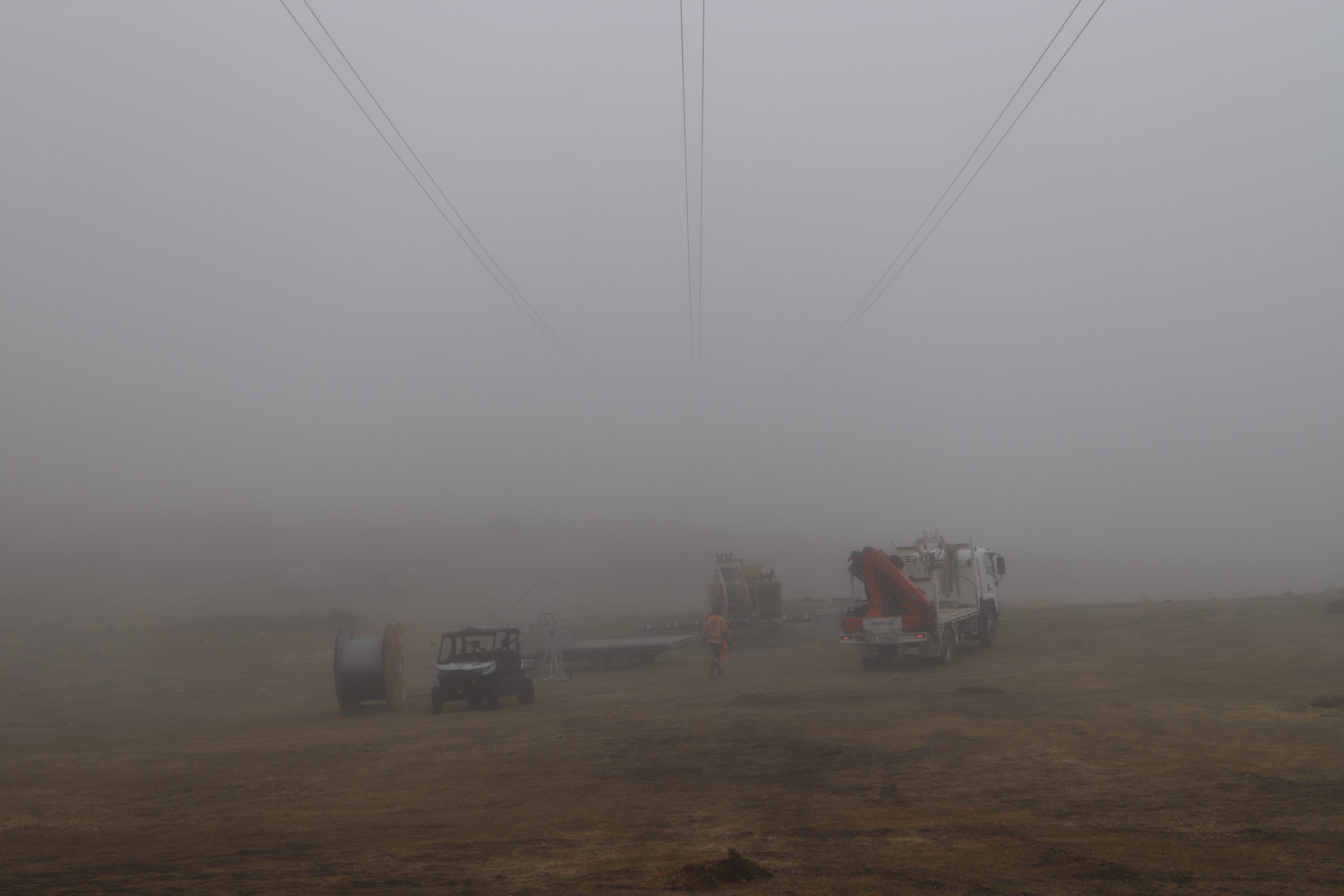
Adapting to mother nature’s schedule
The section of powerlines Omexom is duplexing traverses a long corridor of high-country terrain with extreme weather conditions in the winter months from June to August, during which work must be paused.
But even then, unpredictable weather conditions cannot be entirely avoided. Crews on site faced extreme temperature variations; thick fog and freezing conditions (-8˚C) one day and heat waves (+36˚C) the next are no strange occurrence in this region.
This section of the CUWLP is also located in an area of iconic South Island sheep stations. Mother sheep were at risk of abandoning their offspring if spooked by the presence of construction crews during the lambing season.
To guarantee that ewes could lamb in peace, the crews’ work schedule was carefully planned to avoid lambing months on lower lying properties throughout the earlier, September to October lambing season and high-country areas with the later lambing season of November to December.
Further environmental considerations included minimizing impact on the habitat of the endangered lizard species which roam the area and reinstating alpine tussock after completing works in an area. Wherever temporary roads needed to be installed, silt retaining fences prevented the siltation of streams and water courses.
